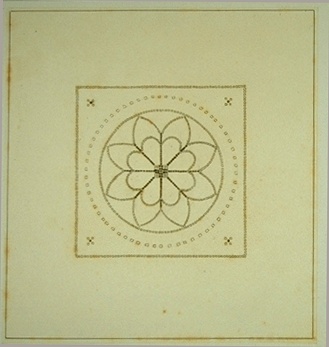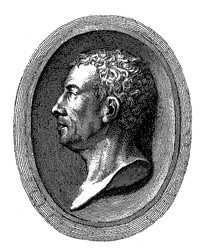Die zeigt ein Fußbodenmosaik des linken Raumes neben dem Tablinium aus dem Haus VI 14, 21-24, der Walkerei des M. Vesonius Primus in Pompeji (Vgl. auch WG-B.101,9 und 5).
Ausgeführt wurde es als Opus signium. Dabei wurden in den rötlichen Estrich weiße und schwarze Mosaiksteinchen eingefügt und zu ornamentalen Rosette zusammengesetzt.
Die Zeichnung stammt von Geremia Discanno. Die Chromolithographie für den Druck fertigte Vittori Steeger an.
Im Druck wurde der Estrich in rotbraunen Tönen wiedergegeben.
Publiziert in: Pompeji. Die neuesten Ausgrabungen von 1874-1881, hrsg. von Emil Presuhn, Leipzig 1882, IV 4.
Der Druck ist signiert.
(Stephanie-Gerrit Bruer)
en

